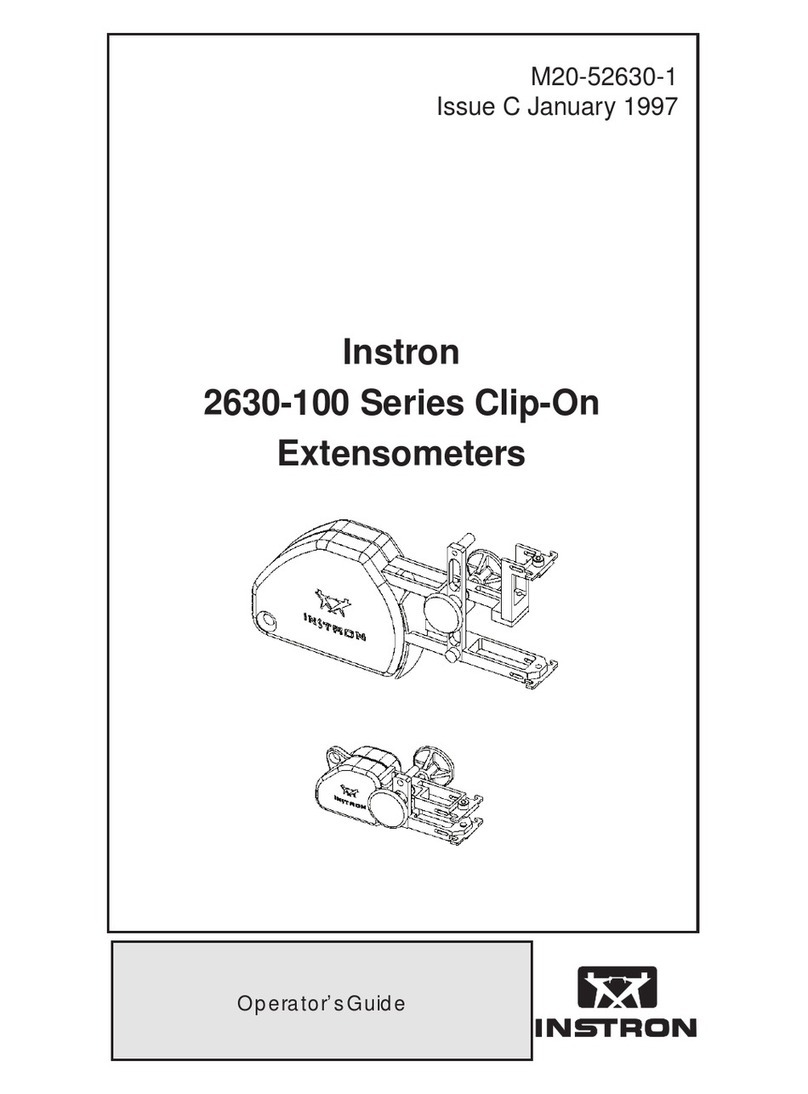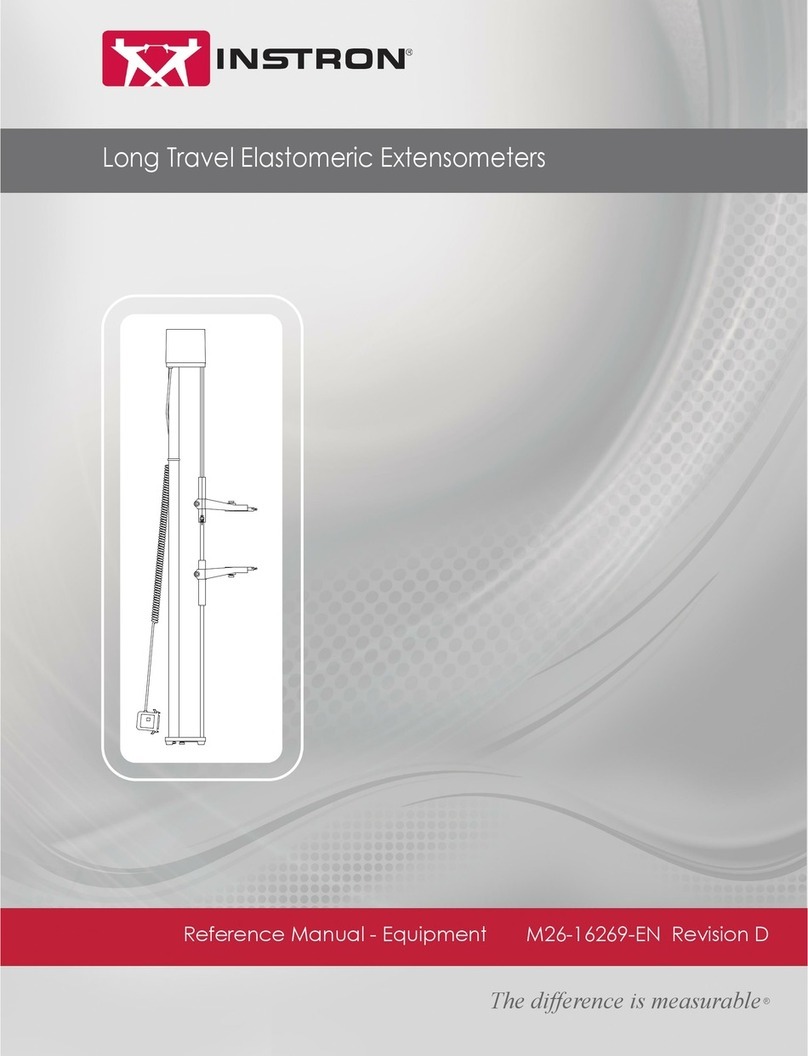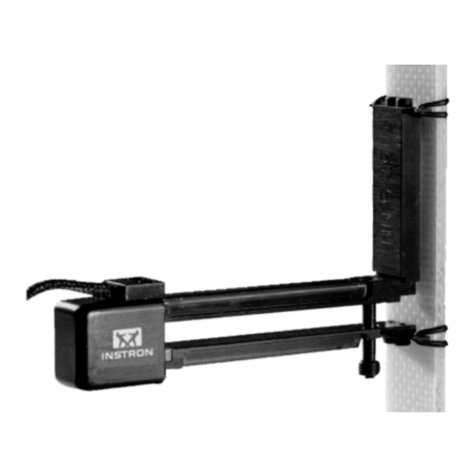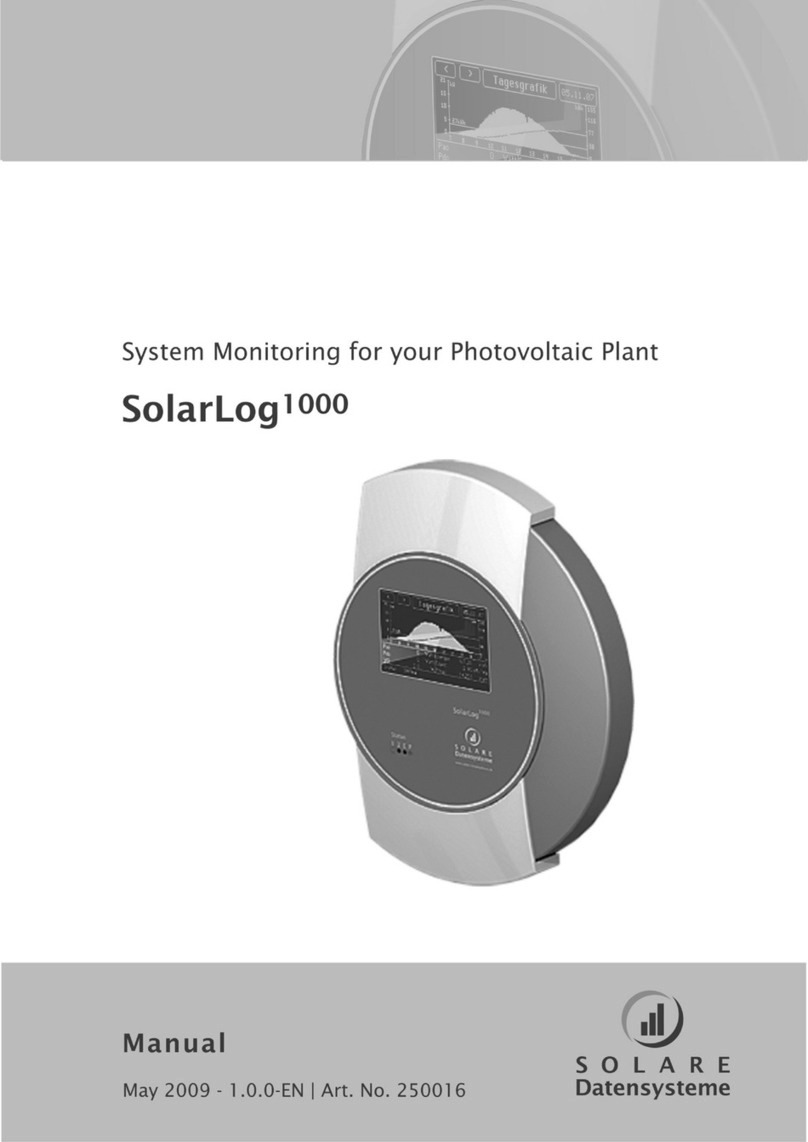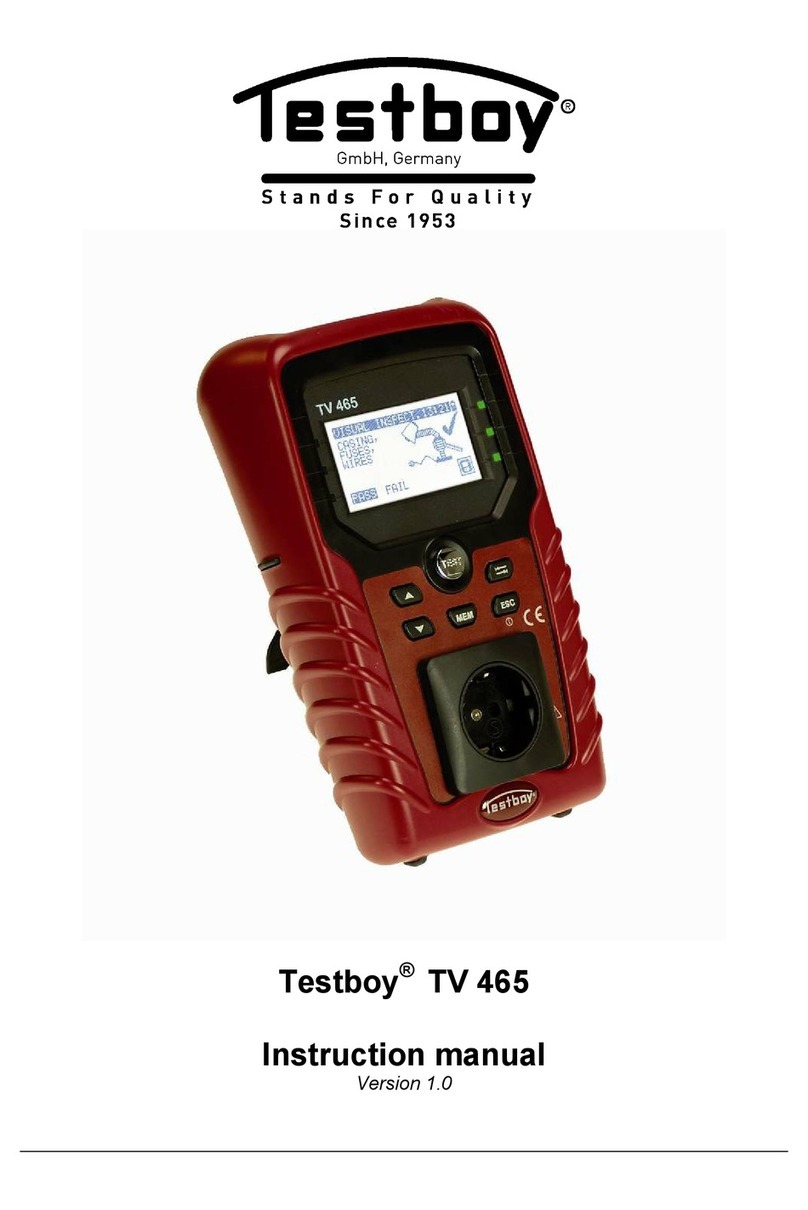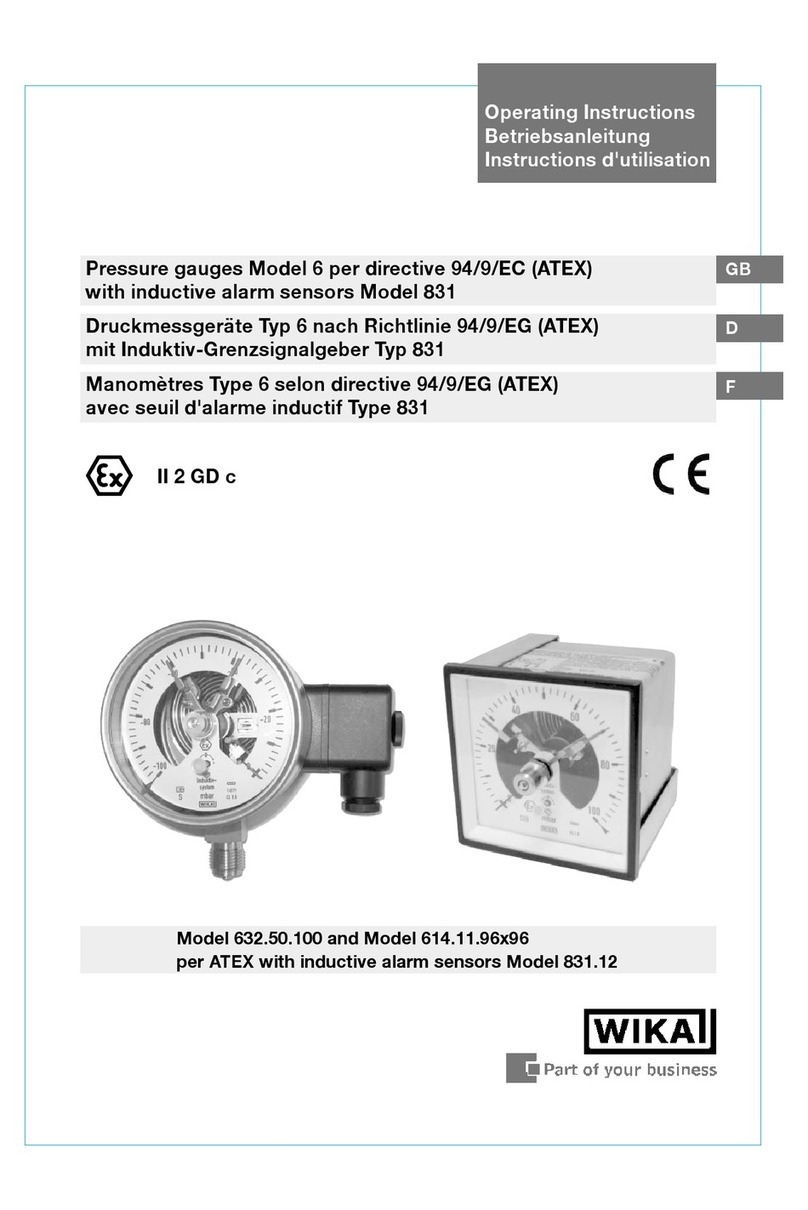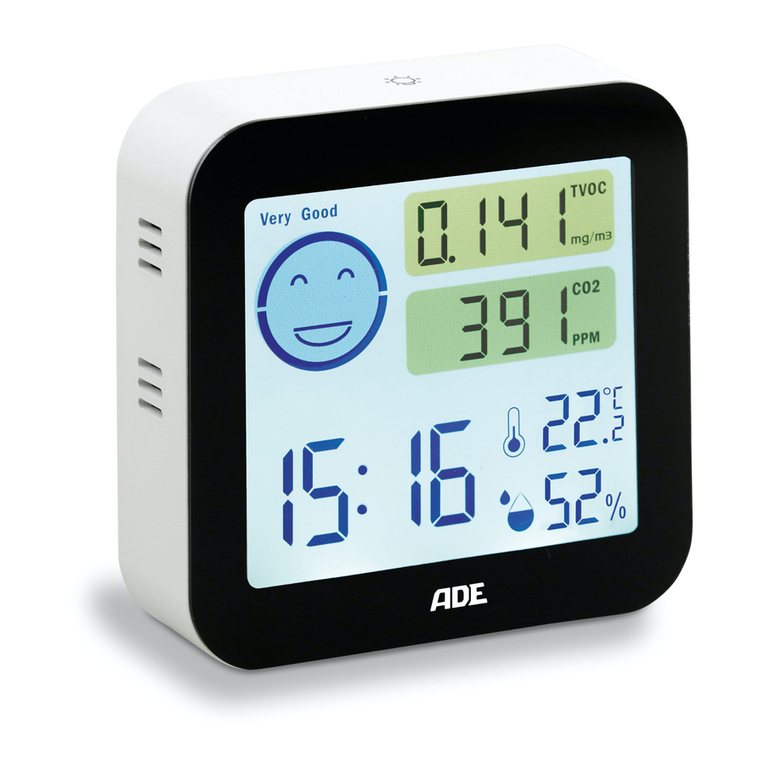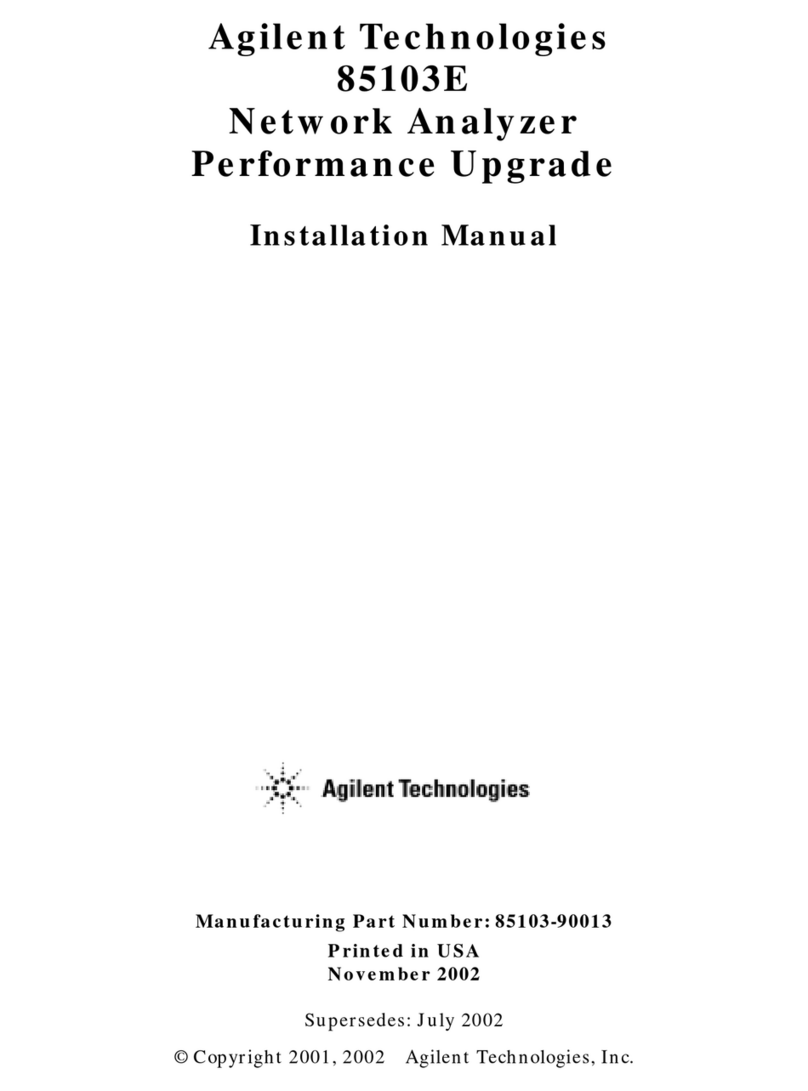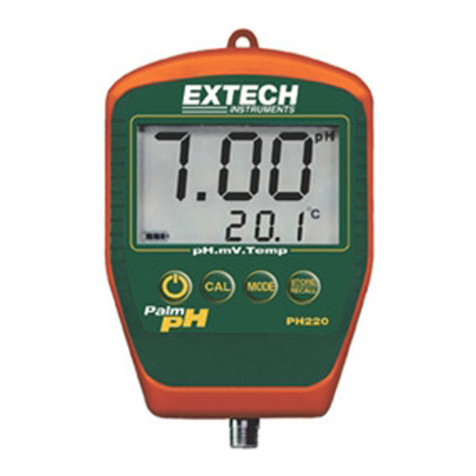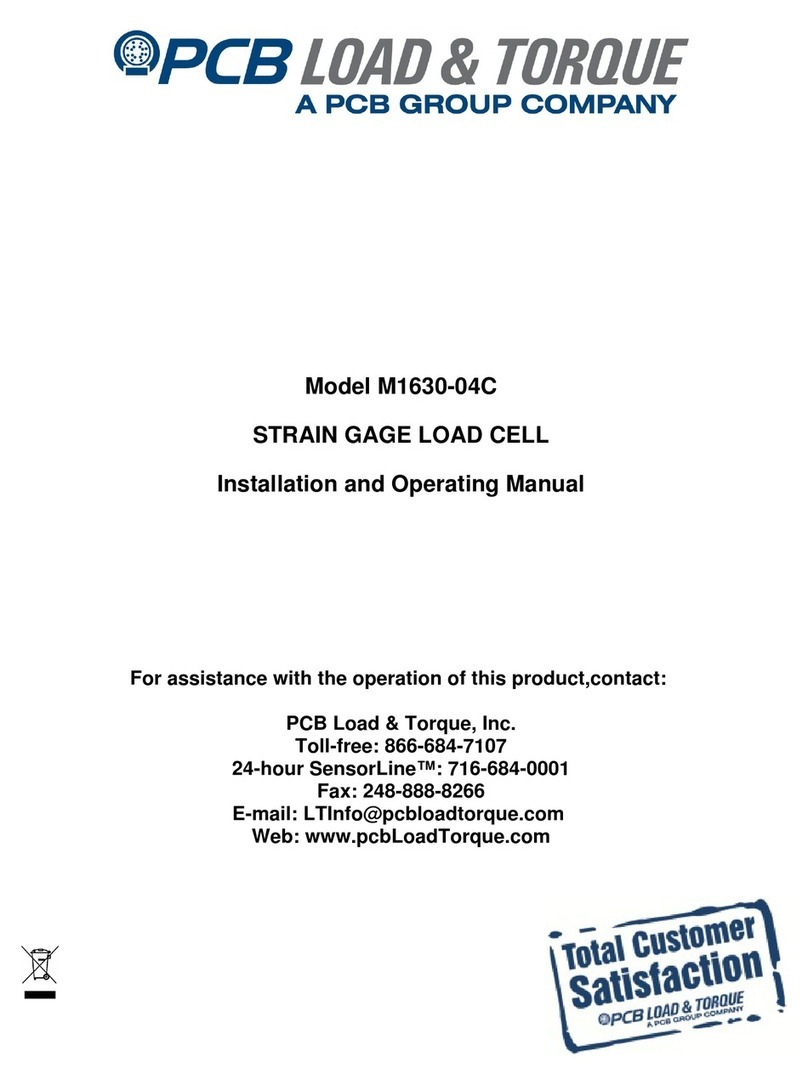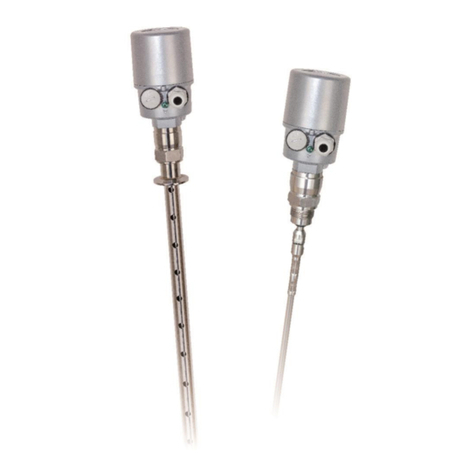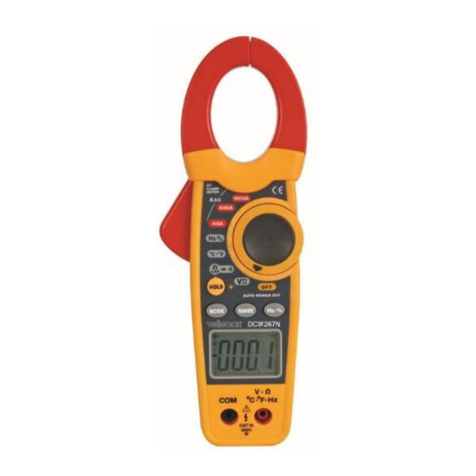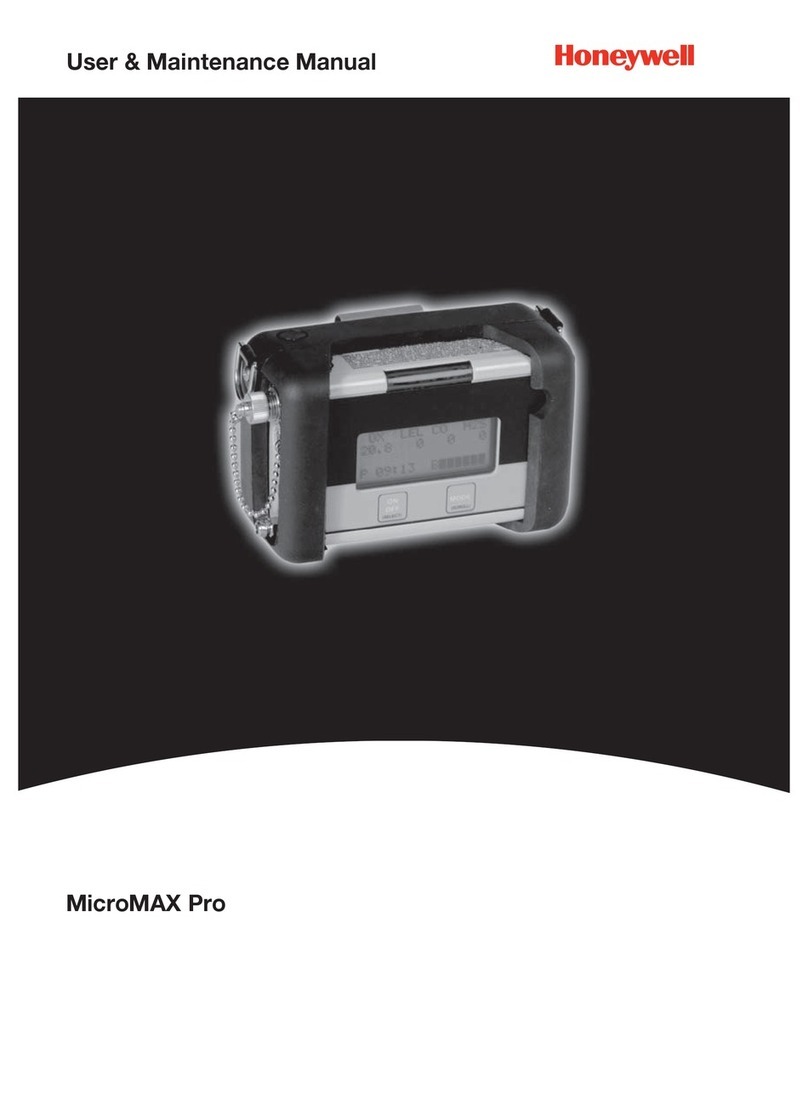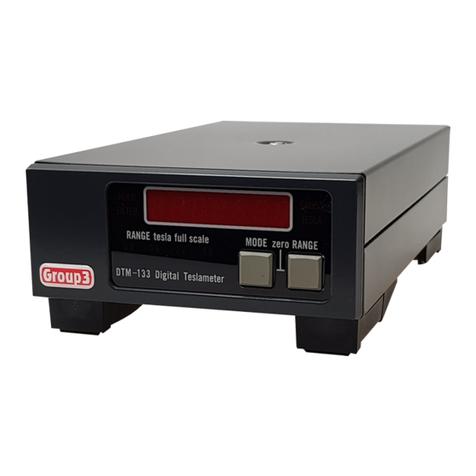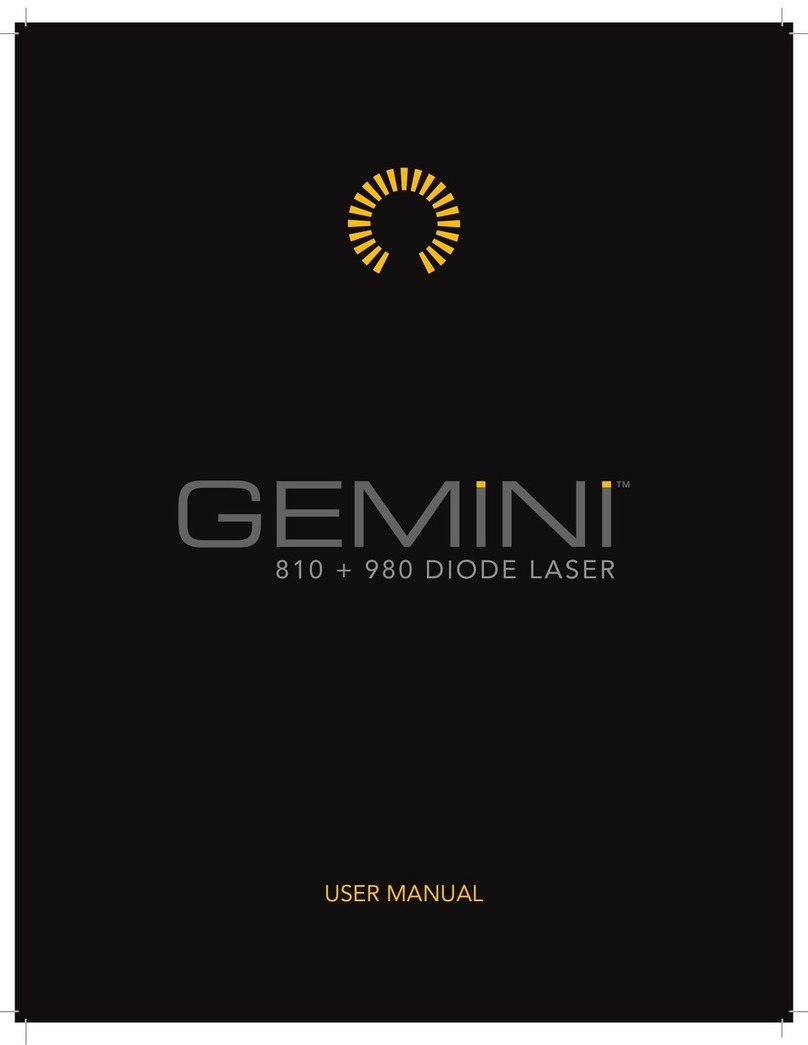Instron AVE2 Manual

Instron Video Extensometer AVE2 and SVE2
Operator’s Guide
M16-16905-EN Revision D

Proprietary Rights Notice
This document and the information that it contains are the property of Illinois Tool Works Inc.
(ITW). Rights to duplicate or otherwise copy this document and rights to disclose the document
and the information that it contains to others and the right to use the information contained
therein may be acquired only by written permission signed by a duly authorized officer of ITW.
Trademarks
Instron®is a registered trademark of Illinois Tool Works Inc. (ITW). Other names, logos, icons and
marks identifying Instron products and services referenced herein are trademarks of ITW and
may not be used without the prior written permission of ITW.
Other product and company names listed are trademarks or trade names of their respective
companies.
Original Instructions
Copyright © 2017 Illinois Tool Works Inc. All rights reserved. All of the specifications shown in
this document are subject to change without notice.
Worldwide Headquarters
Instron
825 University Avenue
Norwood, MA 02062-2643
United States of America
European Headquarters
Instron
Coronation Road
High Wycombe, Bucks HP12 3SY
United Kingdom

3
Preliminary Pages
Product Support: www.instron.com
General Safety Precautions
Materials testing systems are potentially hazardous.
Materials testing involves inherent hazards from high forces, rapid motions, and
stored energy. You must be aware of all moving and operating components in
the testing system that are potentially hazardous, particularly force actuators or
a moving crosshead.
Carefully read all relevant manuals and observe all Warnings and Cautions. The
term Warning is used where a hazard may lead to injury or death. The term
Caution is used where a hazard may lead to damage to equipment or to loss of
data.
Instron products, to the best of its knowledge, comply with various national and
international safety standards, in as much as they apply to materials and
structural testing. We certify that our products comply with all relevant EU
directives (CE mark).
Because of the wide range of applications with which our instruments are used,
and over which we have no control, additional protection devices and operating
procedures may be necessary due to specific accident prevention regulations,
safety regulations, further EEA directives or locally valid regulations. The extent
of our delivery regarding protective devices is defined in your initial sales
quotation. We are thus free of liability in this respect.
At your request, we will gladly provide advice and quotations for additional
safety devices such as protective shielding, warning signs or methods of
restricting access to the equipment.
The following pages detail various general warnings that you must heed at all
times while using materials testing equipment. You will find more specific
Warnings and Cautions in the text whenever a potential hazard exists.
Your best safety precautions are to gain a thorough understanding of the
equipment by reading your instruction manuals and to always use good
judgement.
It is our strong recommendation that you should carry out your own product
safety risk assessment.

Preliminary Pages
4M16-16905-EN
Warnings
Hazard - Press the Emergency Stop button whenever you consider that an
unsafe condition exists.
The Emergency Stop button removes hydraulic power or electrical drive from the
testing system and brings the hazardous elements of the system to a stop as
quickly as possible. It does not isolate the system from electrical power, other
means are provided to disconnect the electrical supply. Whenever you consider
that safety may be compromised, stop the test using the Emergency Stop
button. Investigate and resolve the situation that caused the use of the
Emergency Stop button before you reset it.
Flying Debris Hazard - Make sure that test specimens are installed correctly
in grips or fixtures in order to eliminate stresses that can cause breakage of
grip jaws or fixture components.
Incorrect installation of test specimens creates stresses in grip jaws or fixture
components that can result in breakage of these components. The high
energies involved can cause the broken parts to be projected forcefully some
distance from the test area. Install specimens in the center of the grip jaws in
line with the load path. Insert specimens into the jaws by at least the amount
recommended in your grip documentation. This amount can vary between 66%
to 100% insertion depth; refer to supplied instructions for your specific grips.
Use any centering and alignment devices provided.
Hazard - Protect electrical cables from damage and inadvertent
disconnection.
The loss of controlling and feedback signals that can result from a disconnected
or damaged cable causes an open loop condition that may drive the actuator or
crosshead rapidly to its extremes of motion. Protect all electrical cables,
particularly transducer cables, from damage. Never route cables across the
floor without protection, nor suspend cables overhead under excessive strain.
Use padding to avoid chafing where cables are routed around corners or
through wall openings.

5
Preliminary Pages
Product Support: www.instron.com
High/Low Temperature Hazard - Wear protective clothing when handling
equipment at extremes of temperature.
Materials testing is often carried out at non-ambient temperatures using ovens,
furnaces or cryogenic chambers. Extreme temperature means an operating
temperature exceeding 60 °C (140 °F) or below 0 °C (32 °F). You must use
protective clothing, such as gloves, when handling equipment at these
temperatures. Display a warning notice concerning low or high temperature
operation whenever temperature control equipment is in use. You should note
that the hazard from extreme temperature can extend beyond the immediate
area of the test.
Crush Hazard - Take care when installing or removing a specimen,
assembly, structure, or load string component.
Installation or removal of a specimen, assembly, structure, or load string
component involves working inside the hazard area between the grips or
fixtures. When working in this area, ensure that other personnel cannot operate
any of the system controls. Keep clear of the jaws of a grip or fixture at all times.
Keep clear of the hazard area between the grips or fixtures during actuator or
crosshead movement. Ensure that all actuator or crosshead movements
necessary for installation or removal are slow and, where possible, at a low
force setting.
Hazard - Do not place a testing system off-line from computer control
without first ensuring that no actuator or crosshead movement will occur
upon transfer to manual control.
The actuator or crosshead will immediately respond to manual control settings
when the system is placed off-line from computer control. Before transferring to
manual control, make sure that the control settings are such that unexpected
actuator or crosshead movement cannot occur.
Robotic Motion Hazard - Keep clear of the operating envelope of a robotic
device unless the device is de-activated.
The robot in an automated testing system presents a hazard because its
movements are hard to predict. The robot can go instantly from a waiting state
to high speed operation in several axes of motion. During system operation,
keep away from the operating envelope of the robot. De-activate the robot
before entering the envelope for any purpose, such as reloading the specimen
magazine.
Warnings

Preliminary Pages
6M16-16905-EN
Hazard - Set the appropriate limits before performing loop tuning or running
waveforms or tests.
Operational limits are included within your testing system to suspend motion or
shut off the system when upper and/or lower bounds of actuator or crosshead
travel, or force or strain, are reached during testing. Correct setting of
operational limits by the operator, prior to testing, will reduce the risk of damage
to test article and system and associated hazard to the operator.
Electrical Hazard - Disconnect the electrical power supply before removing
the covers to electrical equipment.
Disconnect equipment from the electrical power supply before removing any
electrical safety covers or replacing fuses. Do not reconnect the power source
while the covers are removed. Refit covers as soon as possible.
Rotating Machinery Hazard - Disconnect power supplies before removing
the covers to rotating machinery.
Disconnect equipment from all power supplies before removing any cover which
gives access to rotating machinery. Do not reconnect any power supply while
the covers are removed unless you are specifically instructed to do so in the
manual. If the equipment needs to be operated to perform maintenance tasks
with the covers removed, ensure that all loose clothing, long hair, etc. is tied
back. Refit covers as soon as possible.
Hazard - Shut down the hydraulic power supply and discharge hydraulic
pressure before disconnection of any hydraulic fluid coupling.
Do not disconnect any hydraulic coupling without first shutting down the
hydraulic power supply and discharging stored pressure to zero. Tie down or
otherwise secure all pressurized hoses to prevent movement during system
operation and to prevent the hose from whipping about in the event of a
rupture.
Hazard - Shut off the supply of compressed gas and discharge residual gas
pressure before you disconnect any compressed gas coupling.
Do not release gas connections without first disconnecting the gas supply and
discharging any residual pressure to zero.
Warnings

7
Preliminary Pages
Product Support: www.instron.com
Explosion Hazard - Wear eye protection and use protective shields or
screens whenever any possibility exists of a hazard from the failure of a
specimen, assembly or structure under test.
Wear eye protection and use protective shields or screens whenever a risk of
injury to operators and observers exists from the failure of a test specimen,
assembly or structure, particularly where explosive disintegration may occur.
Due to the wide range of specimen materials, assemblies or structures that may
be tested, any hazard resulting from the failure of a test specimen, assembly or
structure is entirely the responsibility of the owner and the user of the
equipment.
Hazard - Ensure components of the load string are correctly pre-loaded to
minimize the risk of fatigue failure.
Dynamic systems, especially where load reversals through zero are occurring,
are at risk of fatigue cracks developing if components of the load string are not
correctly pre-loaded to one another. Apply the specified torque to all load string
fasteners and the correct setting to wedge washers or spiral washers. Visually
inspect highly stressed components such as grips and threaded adapters prior
to every fatigue test for signs of wear or fatigue damage.
Warnings

Preliminary Pages
8M16-16905-EN

9
Preliminary Pages
Product Support: www.instron.com
Table of Contents
Chapter 1: Introduction . . . . . . . . . . . . . . . . . . . . . . . . . . . . . . . . . . . . . . . . . . . . . . . 13
Overview . . . . . . . . . . . . . . . . . . . . . . . . . . . . . . . . . . . . . . . . . . . . . . . . . . . . . . . . . . . . . . . . . 13
AverEdge32™ option (AVE2 only) . . . . . . . . . . . . . . . . . . . . . . . . . . . . . . . . . . . . . . . . . 14
Product support . . . . . . . . . . . . . . . . . . . . . . . . . . . . . . . . . . . . . . . . . . . . . . . . . . . . . . . . . . . 15
Product documentation . . . . . . . . . . . . . . . . . . . . . . . . . . . . . . . . . . . . . . . . . . . . . . . . . . . . . 15
Chapter 2: Specifications. . . . . . . . . . . . . . . . . . . . . . . . . . . . . . . . . . . . . . . . . . . . . . 17
General . . . . . . . . . . . . . . . . . . . . . . . . . . . . . . . . . . . . . . . . . . . . . . . . . . . . . . . . . . . . . . . . . . 17
Standard Mounting Configuration . . . . . . . . . . . . . . . . . . . . . . . . . . . . . . . . . . . . . . . . . 17
AverEdge32™ Mounting Configuration . . . . . . . . . . . . . . . . . . . . . . . . . . . . . . . . . . . . . 19
Environmental. . . . . . . . . . . . . . . . . . . . . . . . . . . . . . . . . . . . . . . . . . . . . . . . . . . . . . . . . . . . . 21
Conformity with EU directives . . . . . . . . . . . . . . . . . . . . . . . . . . . . . . . . . . . . . . . . . . . . . . . . 21
Dimensions and weight . . . . . . . . . . . . . . . . . . . . . . . . . . . . . . . . . . . . . . . . . . . . . . . . . . . . . 22
Software compatibility . . . . . . . . . . . . . . . . . . . . . . . . . . . . . . . . . . . . . . . . . . . . . . . . . . . . . . 22
Chapter 3: Installation . . . . . . . . . . . . . . . . . . . . . . . . . . . . . . . . . . . . . . . . . . . . . . . . 25
Initial installation . . . . . . . . . . . . . . . . . . . . . . . . . . . . . . . . . . . . . . . . . . . . . . . . . . . . . . . . . . 25
Moving between machines . . . . . . . . . . . . . . . . . . . . . . . . . . . . . . . . . . . . . . . . . . . . . . . . . . 26
Electromechanical dual column table top testing machines. . . . . . . . . . . . . . . . . . . . 27
Electromechanical single column testing machines . . . . . . . . . . . . . . . . . . . . . . . . . . 32
5980 (not 5988 or 5989) Floor model testing machines . . . . . . . . . . . . . . . . . . . . . . 36
5988 and 5989 High-capacity floor model testing machines. . . . . . . . . . . . . . . . . . . 40
LX Static hydraulic testing machines. . . . . . . . . . . . . . . . . . . . . . . . . . . . . . . . . . . . . . . 42
8800 and ElectroPuls testing machines. . . . . . . . . . . . . . . . . . . . . . . . . . . . . . . . . . . . 44
System interconnections . . . . . . . . . . . . . . . . . . . . . . . . . . . . . . . . . . . . . . . . . . . . . . . . . . . . 47
Chapter 4: Mark specimens . . . . . . . . . . . . . . . . . . . . . . . . . . . . . . . . . . . . . . . . . . . 51
Overview . . . . . . . . . . . . . . . . . . . . . . . . . . . . . . . . . . . . . . . . . . . . . . . . . . . . . . . . . . . . . . . . . 51
Marking tips . . . . . . . . . . . . . . . . . . . . . . . . . . . . . . . . . . . . . . . . . . . . . . . . . . . . . . . . . . . . . . 52
Applying ink dots. . . . . . . . . . . . . . . . . . . . . . . . . . . . . . . . . . . . . . . . . . . . . . . . . . . . . . . . . . . 52

Preliminary Pages
10 M16-16905-EN
Troubleshooting ink dots . . . . . . . . . . . . . . . . . . . . . . . . . . . . . . . . . . . . . . . . . . . . . . . . . . . . 53
Chapter 5: Set up hardware . . . . . . . . . . . . . . . . . . . . . . . . . . . . . . . . . . . . . . . . . . . 55
Extensometer lenses . . . . . . . . . . . . . . . . . . . . . . . . . . . . . . . . . . . . . . . . . . . . . . . . . . . . . . . 55
AverEdge32™ configuration. . . . . . . . . . . . . . . . . . . . . . . . . . . . . . . . . . . . . . . . . . . . . . 56
Set up the load string . . . . . . . . . . . . . . . . . . . . . . . . . . . . . . . . . . . . . . . . . . . . . . . . . . . . . . . 57
Set up for AverEdge32™ configuration . . . . . . . . . . . . . . . . . . . . . . . . . . . . . . . . . . . . . . . . . 57
Chapter 6: Set up Bluehill Universal®software. . . . . . . . . . . . . . . . . . . . . . . . . . . . . 59
Fully integrated testing systems . . . . . . . . . . . . . . . . . . . . . . . . . . . . . . . . . . . . . . . . . . . . . . 59
Calibrate in Bluehill®Universal software . . . . . . . . . . . . . . . . . . . . . . . . . . . . . . . . . . . 60
Non-integrated testing systems . . . . . . . . . . . . . . . . . . . . . . . . . . . . . . . . . . . . . . . . . . . . . . . 62
Calibrate in the Instron Video Extensometer application. . . . . . . . . . . . . . . . . . . . . . . 63
Chapter 7: Set up Bluehill®3 software . . . . . . . . . . . . . . . . . . . . . . . . . . . . . . . . . . . 67
Fully integrated testing systems . . . . . . . . . . . . . . . . . . . . . . . . . . . . . . . . . . . . . . . . . . . . . . 67
Set up the transverse option . . . . . . . . . . . . . . . . . . . . . . . . . . . . . . . . . . . . . . . . . . . . . 68
Calibrate in Bluehill®3 software . . . . . . . . . . . . . . . . . . . . . . . . . . . . . . . . . . . . . . . . . . 69
Non-integrated testing systems . . . . . . . . . . . . . . . . . . . . . . . . . . . . . . . . . . . . . . . . . . . . . . . 70
Calibrate in the Instron Video Extensometer application. . . . . . . . . . . . . . . . . . . . . . . 71
Chapter 8: Set up other software (not Bluehill®) . . . . . . . . . . . . . . . . . . . . . . . . . . . 75
Set up WaveMatrix™ software for dynamic testing . . . . . . . . . . . . . . . . . . . . . . . . . . . . . . . 75
Set up systems not using Bluehill®or WaveMatrix™. . . . . . . . . . . . . . . . . . . . . . . . . . . . . . 75
Chapter 9: Run tests . . . . . . . . . . . . . . . . . . . . . . . . . . . . . . . . . . . . . . . . . . . . . . . . . . 77
Using Bluehill®Universal . . . . . . . . . . . . . . . . . . . . . . . . . . . . . . . . . . . . . . . . . . . . . . . . . . . . 78
Transverse strain using the AverEdge32™ configuration . . . . . . . . . . . . . . . . . . . . . . 78
Using Bluehill Universal®software with DIC Replay. . . . . . . . . . . . . . . . . . . . . . . . . . . 79
Using Bluehill®3 . . . . . . . . . . . . . . . . . . . . . . . . . . . . . . . . . . . . . . . . . . . . . . . . . . . . . . . . . . 80
Using Bluehill®3 software with DIC Replay . . . . . . . . . . . . . . . . . . . . . . . . . . . . . . . . . 80
Using WaveMatrix™ . . . . . . . . . . . . . . . . . . . . . . . . . . . . . . . . . . . . . . . . . . . . . . . . . . . . . . . . 81
Systems not using Bluehill®or WaveMatrix™ . . . . . . . . . . . . . . . . . . . . . . . . . . . . . . . . . . . 82

11
Preliminary Pages
Product Support: www.instron.com
Chapter 10: Maintenance . . . . . . . . . . . . . . . . . . . . . . . . . . . . . . . . . . . . . . . . . . . . . . 83
General . . . . . . . . . . . . . . . . . . . . . . . . . . . . . . . . . . . . . . . . . . . . . . . . . . . . . . . . . . . . . . . . . . 83
Index . . . . . . . . . . . . . . . . . . . . . . . . . . . . . . . . . . . . . . . . . . . . . . . . . . . . . . . . . . . . . . . . 85

Preliminary Pages
12 M16-16905-EN

13
Product Support: www.instron.com
Chapter 1
Introduction
•Overview. . . . . . . . . . . . . . . . . . . . . . . . . . . . . . . . . . . . . . . . . . . . . . . . . . . . . . . . . . 13
•Product support . . . . . . . . . . . . . . . . . . . . . . . . . . . . . . . . . . . . . . . . . . . . . . . . . . . . 15
•Product documentation. . . . . . . . . . . . . . . . . . . . . . . . . . . . . . . . . . . . . . . . . . . . . . 15
Overview
A video extensometer is designed to accurately measure specimen strain during a
materials test without the need to contact the specimen.
Advantages of the non-contacting measuring process include no mechanical influence
on the specimen, ease of use and reproducibility.
The principle of the video extensometer is based upon accurate detection of the gauge
length markers using a high resolution digital video camera.
There are two models of the second generation Instron video extensometer; the AVE2
(Advanced Video Extensometer) and the SVE2 (Standard Video Extensometer).
AVE2 includes:
•CDAT (Constant Density Air Tube) system of fans to control air flow between the
camera and specimen and minimize optical distortion caused by air currents,
enhancing the measurement noise performance
•an option to add transverse strain measurement
•an option to add DIC (Digital Image Correlation) capability
•an option for dynamic axial strain measurement and control using WaveMatrix™
SVE2 does not include the CDAT system and the transverse strain measurement, DIC
option and dynamic axial strain measurement are not available.

Chapter: Introduction
14 M16-16905-EN
Figure 1. AVE2
AverEdge32™ option (AVE2 only)
The AverEdge32™ option, available for the AVE2, is an advanced capability available in
Bluehill®Universal software for measuring strain using the edges of the specimen
instead of dots placed on the specimen. It requires a different mounting system that
includes a back screen.
Transverse strain is measured at multiple locations along the specimen’s edges and
averaged to provide a smoother, more repeatable measurement.
It is particularly useful for determinations of the plastic strain ratio (r-value) on
specimens that exhibit localized plastic deformation (Luder bands).

15
Product support
Product Support: www.instron.com
Product support
Instron provides documentation, including manuals and online help, that can answer
many of the questions you may have. It is recommended that you review the
documentation sent with the system you purchased for possible solutions to your
questions.
If you cannot find answers in these sources, contact Instron’s Service department
directly. A list of Instron offices is available on our website at www.instron.com. In the
US and Canada, you can call directly at 1-800-473-7838.
Product documentation
Instron offers a comprehensive range of documentation to help you get the most out of
your Instron products. Depending on what you have purchased, your documentation
may include some or all of the following:
We welcome your feedback on any aspect of the product documentation. Please email
info_dev@instron.com with your comments.
Operator’s Guide How to use your system components and controls, procedures for
setting limits, calibration and other frequently performed operating
tasks.
System Support Information about system installation, set up and configuration,
transducer connection and calibration.
Online Help Software products come complete with context sensitive help, which
provides detailed information on how to use all software features.
Accessory
Equipment
Reference
How to set up and use any accessories you have purchased, for
example grips, fixtures, extensometers, transducers, and environmental
chambers.

Chapter: Introduction
16 M16-16905-EN

17
Product Support: www.instron.com
Chapter 2
Specifications
•General. . . . . . . . . . . . . . . . . . . . . . . . . . . . . . . . . . . . . . . . . . . . . . . . . . . . . . . . . . . 17
•Environmental . . . . . . . . . . . . . . . . . . . . . . . . . . . . . . . . . . . . . . . . . . . . . . . . . . . . . 21
•Conformity with EU directives . . . . . . . . . . . . . . . . . . . . . . . . . . . . . . . . . . . . . . . . . 21
•Dimensions and weight. . . . . . . . . . . . . . . . . . . . . . . . . . . . . . . . . . . . . . . . . . . . . . 22
•Software compatibility. . . . . . . . . . . . . . . . . . . . . . . . . . . . . . . . . . . . . . . . . . . . . . . 22
General
Standard Mounting Configuration
The following tables contain specifications for the AVE2 and SVE2 when installed on
different testing machines using the standard mounting configuration. Refer to
“AverEdge32™ Mounting Configuration” on page 19 if you are using the
AverEdge32™ mounting configuration.
Table 1. Table model testers, (e.g. 5940 and 5960) ElectroPuls and 8800 testing
systems
Lens focal length (mm) 1
35 16 9 6
Axial field of view (mm) 100 240 425 620
Transverse field of view (mm) 13 33 57 85
Minimum axial gauge length (mm) 5 6 12 15
Minimum transverse gauge width
(mm)
561215
AVE2 resolution (μm) 0.5 0.5 21.5 3.0
SVE2 resolution (μm) 1.0 1.0 3.0 6.0

Chapter: Specifications
18 M16-16905-EN
AVE2 measurement accuracy
(axial and transverse) (μm) (the
greater of the two listed)
the greater of:
±1 or ±0.5%
of reading
±1 or ±0.5%
of reading 3
±3 or ±1% of
reading
±9 or ±1% of
reading
SVE2 measurement accuracy
(axial and transverse) (μm) (the
greater of the two listed)
the greater of:
±3 or ±0.5%
of reading
±5 or ±0.5%
of reading
±10 or ±1% of
reading
±15 or ±1% of
reading
Recommended dot diameter
(mm)
1-3 2-4 3-6 3-6
1. when used for dynamic testing on ElectroPuls or 8800, the 16mm lens is the only available option.
2. when used for dynamic testing on ElectroPuls or 8800, resolution is 2.5μm
3. when used for dynamic testing on ElectroPuls or 8800, accuracy is ±0.5μm or ±0.5% of reading
Table 1. Table model testers, (e.g. 5940 and 5960) ElectroPuls and 8800 testing
systems (Continued)
Lens focal length (mm) 1
35 16 9 6
Table 2. Floor model testers, e.g. 5985 (not 5988 or 5989) and LX static hydraulic
testing machines
Lens focal length (mm)
35 16 9 6
Axial field of view (mm) 130 310 560 840
Transverse field of view (mm) 16 40 70 110
Minimum axial gauge length (mm) 5 6 12 15
Minimum transverse gauge width
(mm)
561215
AVE2 resolution (µm) 0.5 0.5 1.5 3.0
SVE2 resolution (µm) 1.0 1.0 3.0 6.0
AVE2 measurement accuracy
(axial and transverse) (µm)
the greater of:
±1 or ±0.5%
of reading
±1 or ±0.5%
of reading
±3 or ±1% of
reading
±9 or ±1% of
reading
SVE2 measurement accuracy
(axial and transverse) (µm) (the
greater of the two listed)
the greater of:
±3 or ±0.5%
of reading
±5 or ±0.5%
of reading
±10 or ±1% of
reading
±15 or ±1% of
reading

19
General
Product Support: www.instron.com
AverEdge32™ Mounting Configuration
The AverEdge32™ mounting configuration lets you use an edge-based method to
determine transverse strain during testing. This edge-based method is only available
using the 16 mm lens but you can perform dot-based axial and transverse testing using
this mounting configuration with all lenses.
The AverEdge32™ mounting configuration affects both axial and transverse fields of
view, whether you are using dot-based or edge-based methods.
Recommended dot diameter
(mm)
1-3 2-4 3-6 3-6
Table 2. Floor model testers, e.g. 5985 (not 5988 or 5989) and LX static hydraulic
testing machines (Continued)
Lens focal length (mm)
35 16 9 6
Table 3. High-capacity floor model testers, e.g. 5988 or 5989
Lens focal length (mm)
35 16 9 6
Axial field of view (mm) 160 390 680 not suitable
Transverse field of view (mm) 20 50 90 not suitable
Minimum axial gauge length (mm) 5 6 12 not suitable
Minimum transverse gauge width
(mm)
5612notsuitable
AVE2 resolution (µm) 1.0 1.0 2.0 not suitable
SVE2 resolution (µm) 2.0 2.5 8.0 not suitable
AVE2 measurement accuracy
(axial and transverse) (µm) (the
greater of the two listed)
the greater of:
±1 or ±0.5%
of reading
±1 or ±1% of
reading
±9 or ±1% of
reading
not suitable
SVE2 measurement accuracy
(axial and transverse) (µm) (the
greater of the two listed)
the greater of:
±3 or ±1% of
reading
±5 or ±0.5%
of reading
±10 or ±1% of
reading
not suitable
Recommended dot diameter
(mm)
1-3 2-4 3-6 not suitable

Chapter: Specifications
20 M16-16905-EN
Table 4 on page 20 contains specifications for all lenses when using the dot-based
method for transverse strain.
Table 5 on page 20 contains specifications for the 16 mm lens when using the edge-
based method for transverse strain.
Table 4. Dot-based method
Lens focal length (mm)
35 16 9 6
Axial field of view (mm) 130 310 560 840
Transverse field of view (mm) 16 40 70 110
Minimum axial gauge length (mm) 5 6 12 15
Minimum transverse gauge width
(mm)
561215
AVE2 resolution (μm) 0.5 0.5 1.5 3.0
AVE2 measurement accuracy
(axial and transverse) (μm) (the
greater of the two listed)
±1 or ±0.5% of reading, whichever is greater
Recommended dot diameter
(mm)
1-3 2-4 3-6 3-6
Table 5. Edge-based method - 16 mm lens only
Parameter Value
Axial field of view (mm) 205
Transverse field of view (mm) 40
Minimum axial gauge length (mm) 25
Minimum transverse gauge width (mm) 12.5
AVE2 resolution (μm) 0.5
AVE2 axial measurement accuracy (μm) ±1 or ±0.5% of reading, whichever is
greater
AVE2 transverse measurement accuracy (μm) ±3 or ±1% of reading, whichever is
greater
Recommended dot diameter (mm) 2-4
This manual suits for next models
1
Table of contents
Other Instron Measuring Instrument manuals

